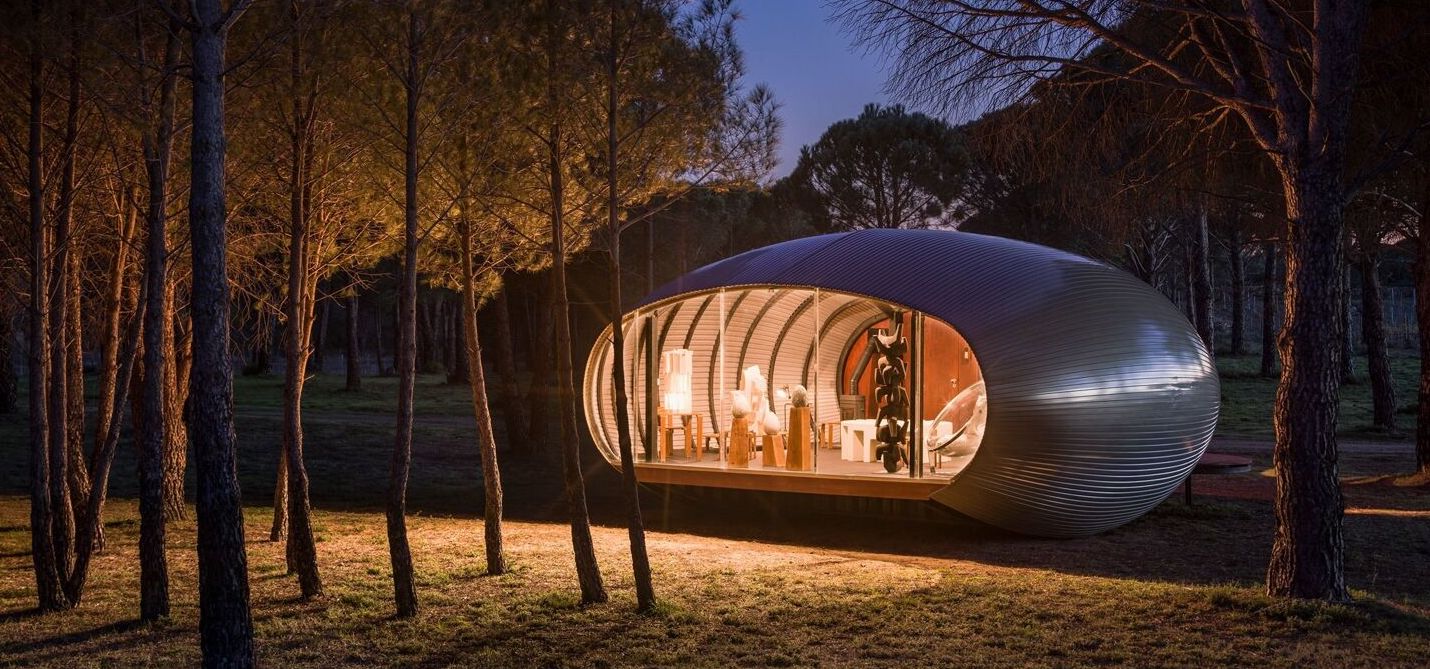Clément Cividino built his reputation seeking out unusual and rare furniture pieces from around the world – and he has recently shifted his attention to collectible micro-architecture.
Earlier this year, an unusual cocoon-like structure appeared in Milan’s Piazza San Babila, housing newly launched pieces from the Louis Vuitton Objets Nomades collection for the city’s famous design week. For many, however, the main attraction was the retro-futuristic house itself. Wrapped in a skin of 180 aluminium blades and bolted to an Eiffel-type base, the tiny mobile Nova House is an emblematic example of 1970s prospective architecture, designed by Studio Rochel in 1972 – and its presence on the streets of Milan was thanks to Clément Cividino, a curator and gallerist who is making his mark by expanding from collectible furniture into collectible micro-architecture.
“Ten years ago, there were a lot of vintage sellers,” says Cividino. “I decided to do something new and began to collect and sell small, mobile houses. I’m very passionate about design and architecture – but I’m also a good businessman. I try to have a different mentality to the more typical Parisian galleries.”
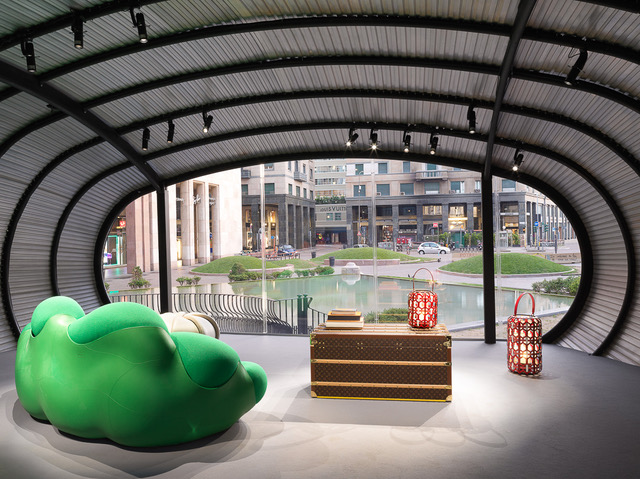


Tapping into the ‘tiny house’ movement proved to be a smart move, and Cividino now has a unique expertise in the world of 20th- and 21st-century micro-architecture. Six years ago, he partnered with the Terra Remota winery in Girona, Spain, creating an open-air showroom of his collected homes. To date, he has sold three of these houses, including a Tétrodon Modular Habitat by Jacques Berce to a famous fashion designer, and a Total Filling Station by Jean Prouvé to a well-known film producer. Others, such as the Nova House, he uses as mobile exhibition spaces.
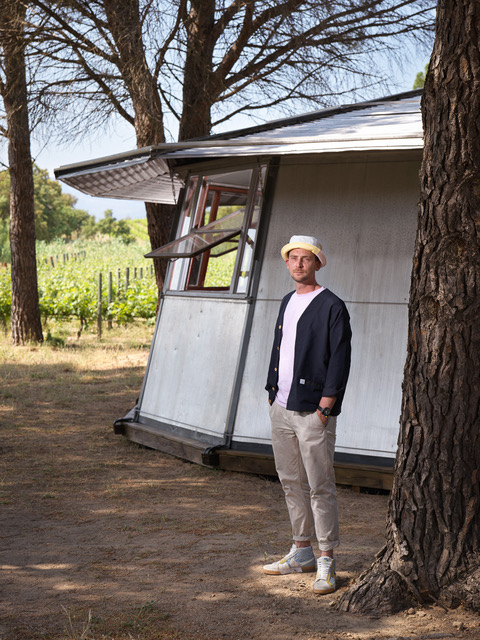
In keeping with his reputation as a purveyor of micro-architecture, Cividino has never done things in a particularly conventional way. Take, for example, his first big break as an antique dealer. Living in Argentina in his youth, he had unintentionally bought a number of design classics by the likes of Ray and Charles Eames and George Nelson. “I didn’t understand anything about design at the time, I bought them because I liked the colour and form,” he recalls. Later, when he was working at a fashion company in the east of France, he discovered the value of the pieces he had bought and started selling them on eBay. “I was buying chairs in Argentina for $10 and selling them for hundreds,” he says of the moment he spotted a business opportunity.
He moved to the south of France and found that he was one of only a few dealers specialising in modern vintage design. He began leafleting local mail-boxes in search of furniture and his big break came when a woman reached out to him with information about a veritable treasure trove of original furniture by Georges Candilis, a Greek-French architect who worked with. “It was crazy,” he says. “The furniture was under the floor of Les Carrats resort in Port-Leucate – there were hundreds of tables, chairs, and storage units. I bought everything for €20,000 and listed one chair with an auction house for €500. When it sold for €3000, I thought ‘You are a lucky boy!’” Today, the Lattes chair is held in collections around the world – and Cividino still has 150 chairs and tables that he intermittently releases onto the market.
There are so many interesting designers who are forgotten – and finding something truly new with a great story is the best part of what I do. I want to introduce that work to the world.
Clément Cividino
While Cividino’s business owes much to Candilis, his pragmatic, strikingly utilitarian design doesn’t appeal to him as much as the sweeping, sculptural forms and boldly coloured plastics of the Space Age movement. “You see the same Jean Prouvé and Charlotte Perriand pieces everywhere – and I’m so tired of seeing the same thing all the time,” he explains of his taste. “The point between sculptural and functional forms of Space Age design is so interesting and designers went crazy with plastic, which was a new material. I like that whole period up to the 1970s – the music, the colours, the social rules… it was all very free, happy and joyful.”
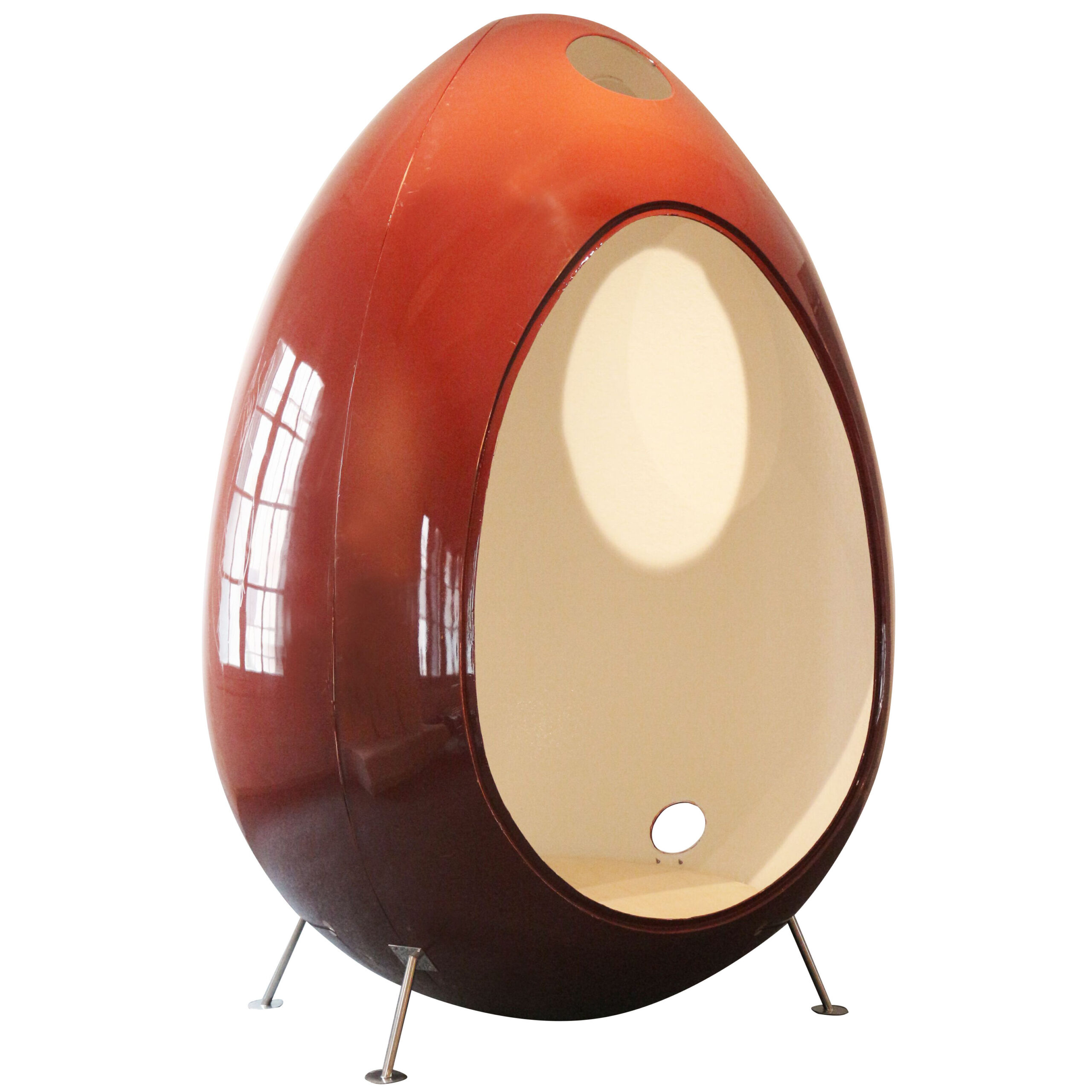

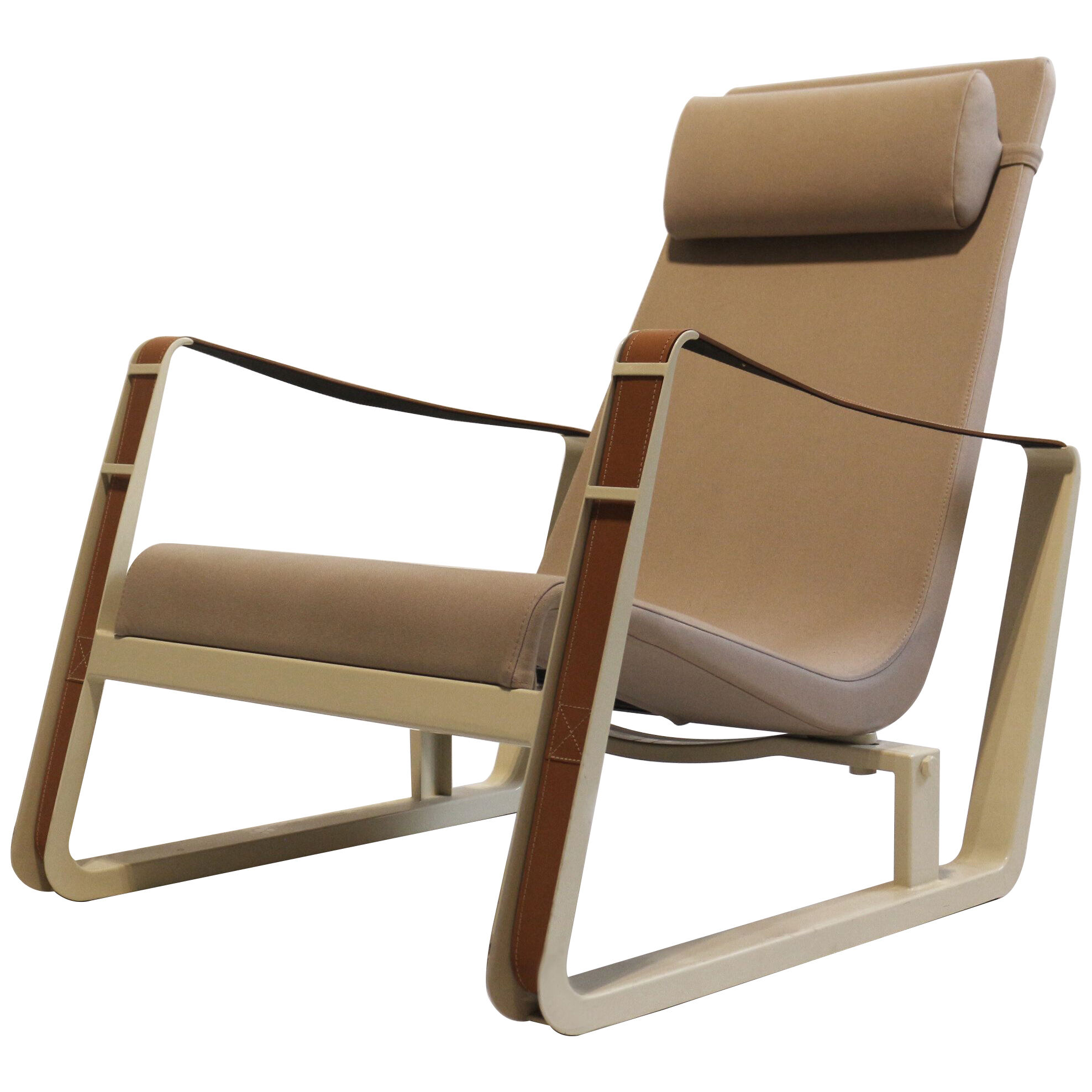
Today, Cividino discovers pieces around the world, and he credits his knack for uncovering rare and unusual pieces to his voracious appetite for design books. Through books and other printed materials, such as catalogues and magazines, he not only knows what to look for, but can also verify whether a piece still exists and where it might be. He then travels to other countries, speaks to people and tries to find the particular piece. “I’m like a detective or a hunter – and it’s exciting,” he says. “Although it can take years, and sometimes you finally track down a tiny house or a piece of furniture and the owners don’t want to sell it – which is frustrating.”
I’m like a detective or a hunter – and it’s exciting – although it can take years, and sometimes you finally track down a tiny house or a piece of furniture and the owners don’t want to sell it – which is frustrating.
Clément Cividino
When he does successfully source a new piece, he brings it to his gallery space in Perpignan, a southern French city near the Mediterranean coast and the border of Spain. A former school, the 300-square-metre space offers a characterful backdrop for the furniture – think exhibitions in the old kitchen – and an office in a classroom. Here, Cividino and his team restore both furniture and architecture, working with specialists to bring vintage pieces back to life for decorators and interior designers; or carefully preserving pieces in their original state if destined for museums or personal collections.
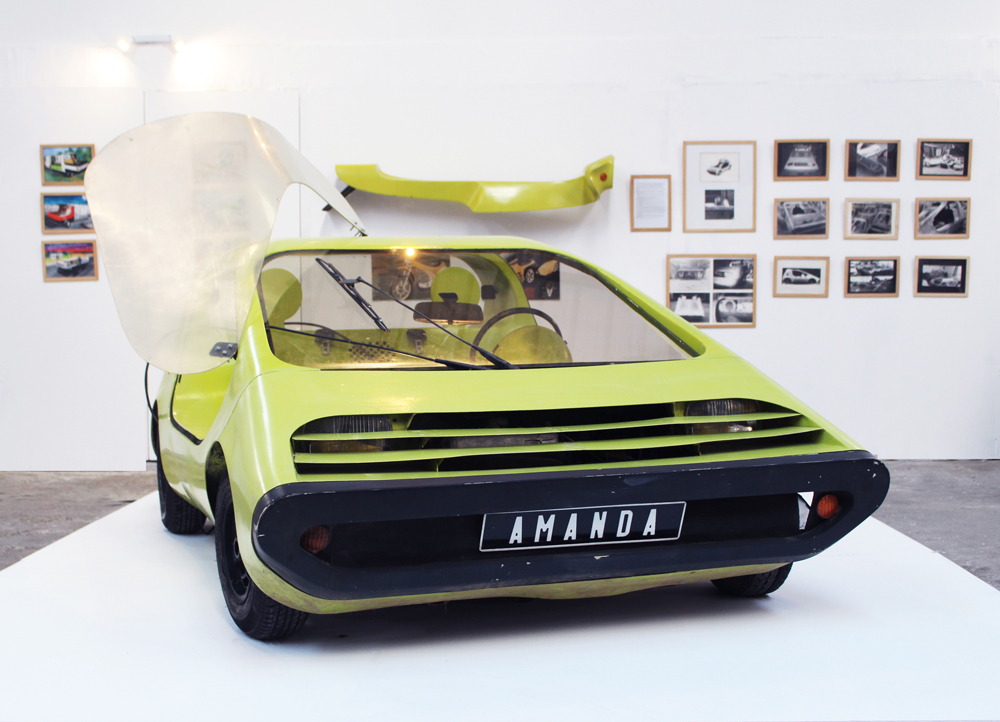
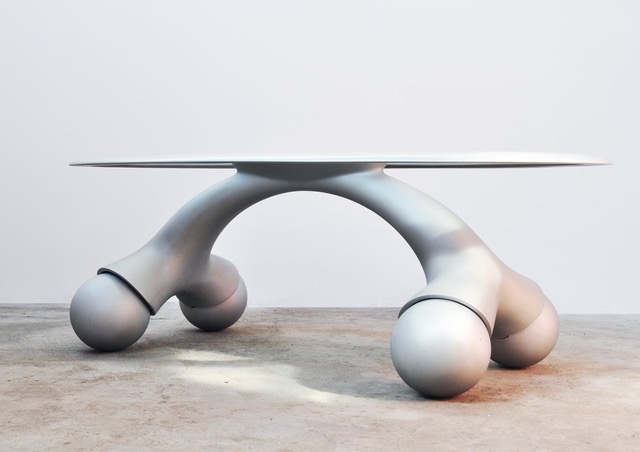

While the gallery offers Cividino a physical space to restore and exhibit the work, most of his sales come from online. Customers from as far afield as Japan, Korea, China, and New York are drawn not only to his eye for rare examples from some of the world’s most celebrated designers but also the more unusual, lesser-known pieces and, of course, the micro-architecture that he has become known for.
“I want my personality to make a mark on this industry and for people to know me for my houses and my plastic collection,” says Cividino. “There are so many interesting designers who are forgotten – and finding something truly new with a great story is the best part of what I do. I want to introduce that work to the world.”
clementcividino.com
Effect Magazine is brought to you by Effetto



